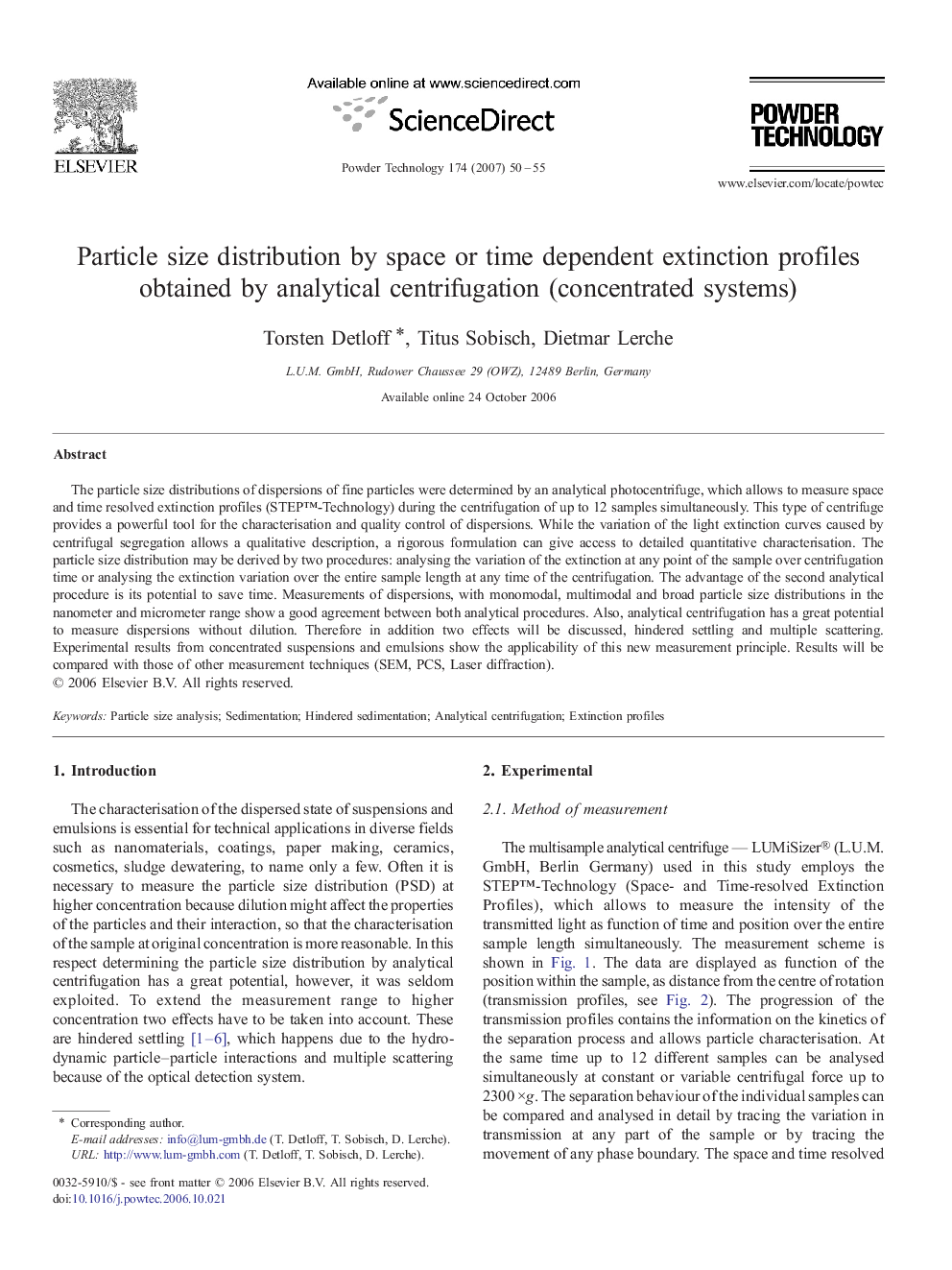| Article ID | Journal | Published Year | Pages | File Type |
|---|---|---|---|---|
| 239197 | Powder Technology | 2007 | 6 Pages |
The particle size distributions of dispersions of fine particles were determined by an analytical photocentrifuge, which allows to measure space and time resolved extinction profiles (STEP™-Technology) during the centrifugation of up to 12 samples simultaneously. This type of centrifuge provides a powerful tool for the characterisation and quality control of dispersions. While the variation of the light extinction curves caused by centrifugal segregation allows a qualitative description, a rigorous formulation can give access to detailed quantitative characterisation. The particle size distribution may be derived by two procedures: analysing the variation of the extinction at any point of the sample over centrifugation time or analysing the extinction variation over the entire sample length at any time of the centrifugation. The advantage of the second analytical procedure is its potential to save time. Measurements of dispersions, with monomodal, multimodal and broad particle size distributions in the nanometer and micrometer range show a good agreement between both analytical procedures. Also, analytical centrifugation has a great potential to measure dispersions without dilution. Therefore in addition two effects will be discussed, hindered settling and multiple scattering. Experimental results from concentrated suspensions and emulsions show the applicability of this new measurement principle. Results will be compared with those of other measurement techniques (SEM, PCS, Laser diffraction).
Graphical abstractThe particle size distributions of dispersions of fine particles were determined by an analytical photocentrifuge, which allows to measure space and time resolved extinction profiles during the centrifugation of up to 12 different samples simultaneously. Options to account for hindered settling and multiple scattering are described.Figure optionsDownload full-size imageDownload as PowerPoint slide
